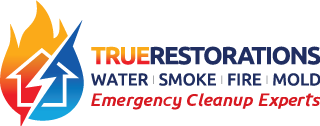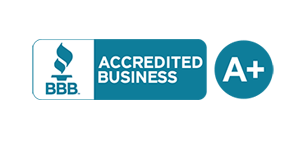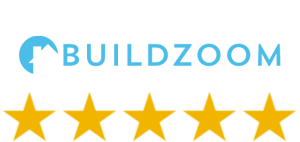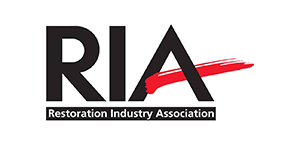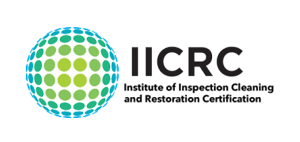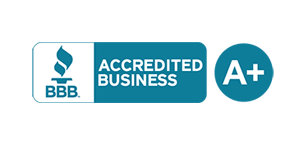Mold growth is a common household problem that can lead to various health issues and damage to your property. Prevention is key when it comes to mold control. In this section, we will discuss effective strategies for preventing mold in your home so that you can maintain a healthy living space.
It’s crucial to take proactive measures to prevent mold from developing in your home. This involves understanding the causes of mold growth and implementing strategies to control moisture, maintain proper ventilation, and conduct regular cleaning and inspections. Also, you can use an at home mold test kit from My Mold Detective to see if it’s in the air as well.
Key Takeaways:
- Preventing mold growth requires proactive measures.
- Understanding the causes of mold growth is crucial in preventing its development.
- Controlling moisture levels is one of the key steps in mold prevention.
- Proper ventilation is essential in reducing the likelihood of mold formation.
- Regular cleaning and inspections are necessary for maintaining a mold-free environment.
Understanding the Causes of Mold Growth
Mold growth can be worrying, but understanding the causes can help you prevent it from happening. The following factors contribute to mold development:
| Cause | Description |
|---|---|
| Excess Moisture | High levels of moisture from leaks, condensation, or flooding. |
| Inadequate Ventilation | Poorly ventilated areas trap moisture and create a breeding ground for mold. |
| High Humidity Levels | Areas with high humidity levels, such as bathrooms and basements, are more prone to mold growth. |
Now that you understand the common causes of mold growth, you can start taking preventive measures to keep your home safe and healthy.
Controlling Moisture in Your Home
To prevent mold growth, one of the essential steps is controlling moisture levels in your home. Excess moisture can create an ideal environment for mold growth, leading to various health problems and damage to your property.
Here are some tips to help you in controlling moisture and mold prevention:
Proper Ventilation
Improving ventilation is one of the most effective ways to control moisture in your home. It allows fresh air to circulate, removing damp indoor air. Proper ventilation will also help reduce humidity levels, which can contribute to mold growth.
Tips for maintaining proper ventilation include:
- Install and use exhaust fans in your kitchen and bathroom.
- Make sure your dryer is vented outside.
- Open windows and doors to increase air circulation, especially during and after showering or cooking.
Fix Leaks and Plumbing Issues
Leaks and plumbing issues can create excess moisture in your home, providing an ideal environment for mold growth. It’s essential to fix any leaks and plumbing problems you encounter as soon as possible.
Regularly inspecting your plumbing and fixtures can help you detect issues before they become major problems. Always check for leaks under sinks, around toilets, and in the basement.
Use Dehumidifiers
Dehumidifiers are an effective tool for controlling moisture levels in your home, especially in damp areas such as basements and bathrooms. They work by removing excess moisture from the air, reducing the humidity levels that contribute to mold growth.
When using a dehumidifier, make sure to follow the manufacturer’s instructions for proper use and maintenance. Empty the water collection tank frequently, and clean the unit regularly to prevent mold growth inside the machine.
Maintaining Proper Ventilation
Adequate airflow is essential for preventing mold growth in your home. Without proper ventilation, moisture can accumulate and create the ideal environment for mold to thrive. Here are some tips to help you maintain proper ventilation:
Open windows and doors: One easy way to improve ventilation is by opening windows and doors. This allows fresh air to circulate throughout your home, reducing the risk of mold growth.
Use exhaust fans: In areas prone to moisture, such as the bathroom and kitchen, it’s crucial to use exhaust fans. These fans can help remove excess moisture from the air, preventing mold growth.
| Area | Recommended CFM |
|---|---|
| Bathroom | 50 CFM |
| Kitchen | 100 CFM |
Install a whole-house ventilation system: If your home is particularly susceptible to mold growth, you may want to consider installing a whole-house ventilation system. These systems can improve air circulation throughout your home, reducing moisture levels and preventing mold growth.
By maintaining proper ventilation, you can significantly reduce the risk of mold growth in your home. Take steps to improve airflow and reduce moisture levels, and you’ll be on your way to creating a healthier living environment.
Cleaning and Inspecting Regularly
Regular cleaning and inspections are crucial for preventing mold growth in your home. By paying close attention to areas most susceptible to mold, you can catch any early signs and take necessary action before it becomes a larger problem.
When cleaning your home, focus on the bathrooms, kitchen, and any other areas with moisture and water exposure. Use an effective cleaner, such as a bleach solution or a commercial mold remover, to thoroughly clean any visible mold and remove spores. Be sure to wear protective gear, such as gloves and a mask, to avoid inhaling mold particles.
In addition to regular cleaning, make it a habit to inspect your home for signs of mold. This includes checking for any water leaks or damage, such as discoloration on walls or ceilings, and monitoring humidity levels with a hygrometer. If you notice any musty odors or other indications of mold growth, take swift action to address the problem.
Regular cleaning and inspections can help keep your home mold-free and ensure a healthier living environment for you and your family. By staying vigilant and taking proactive measures, you can prevent mold growth and promote a safer, cleaner home.
Conclusion
By implementing these strategies for mold prevention, you can take control of your home’s environment and protect your health. Remember that preventing mold growth requires proactive measures, such as managing moisture levels, maintaining proper ventilation, and conducting regular inspections and cleaning routines.
In addition to these strategies, it is crucial to address any potential mold issues promptly. If you notice any signs of mold growth, such as musty odors or visible spots, take action immediately to identify and eliminate the source of moisture. It’s best to hire a professional mold remediation specialist who can safely and effectively handle the removal process.
Ultimately, keeping your home mold-free requires ongoing effort and attention. However, by taking the steps outlined in this article, you can create a healthier and more comfortable living space for you and your loved ones. So, take charge of your home’s environment, and enjoy the peace of mind that comes with knowing you’re doing everything you can to prevent mold growth.
FAQ
What are some practical tips for preventing mold in my home?
To prevent mold growth, make sure to control moisture levels, maintain proper ventilation, clean regularly, and conduct inspections to catch any early signs of mold.
What are the common causes of mold growth?
Factors such as excess moisture, inadequate ventilation, and high humidity levels contribute to mold development in homes.
How can I control moisture in my home to prevent mold?
You can control moisture by ensuring proper ventilation, fixing leaks and plumbing issues promptly, and utilizing dehumidifiers in areas with high humidity.
Why is proper ventilation important for mold prevention?
Adequate airflow helps in reducing moisture levels and preventing the buildup of mold. It is crucial to improve ventilation in areas such as bathrooms by utilizing exhaust fans and opening windows when possible.
How often should I clean and inspect my home to prevent mold?
Regular cleaning and inspections are recommended to maintain a mold-free environment. Focus on specific areas prone to mold growth, such as bathrooms, basements, and areas with poor ventilation.
What are the benefits of following these mold prevention tips?
By implementing these tips, you can create a healthier home environment, safeguard your property from mold damage, and minimize health risks associated with mold exposure.
